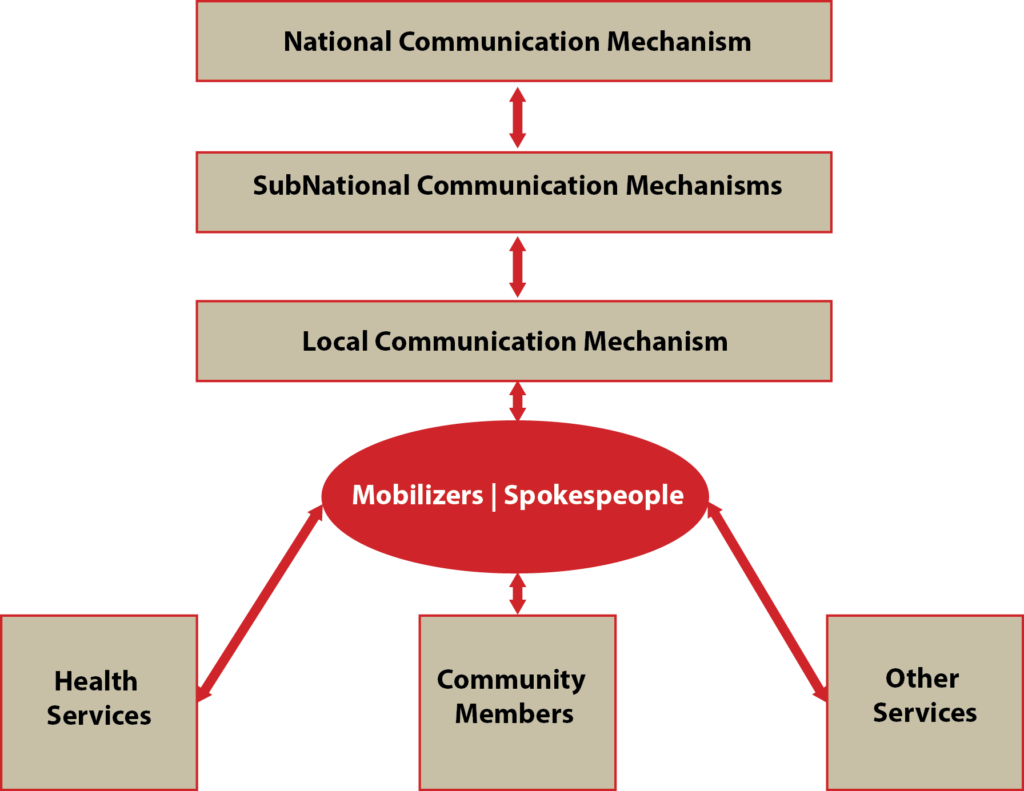Establish a Formal Structure for an Effective Flow of Information
One of the strengths of using spokespeople and mobilizers is that they allow for continuous monitoring of how the community is responding both to the emergency and to the activities aimed at curbing it. For continuous monitoring to be effective, however, mobilizers and spokespeople need to liaise regularly with community members and services, as well as with the local, subnational and national communication systems. These issues have been explored in Unit 1.
he communication between the community, the mobilizers/spokespeople and the communication cells, needs to be a regular, two-way process. It is a feedback loop that allows mobilizers to provide vital information to service providers and to the communication cells on: community perceptions of services and activities; how messages are being received; and social and cultural practices that can inhibit an individual’s ability to engage in protective behaviors. This is particularly important for detecting rumors and arising barriers early, and thus addressing them promptly.
The diagram below provides a representation of how this feedback loop can look, placing the community spokespeople and mobilizers at the center of the process.
Information Flow between Mobilizers, the Community and Communication Cells

The information flow diagram can help determine the feedback loop between the community and the communication cells. It is likely, however, that every location will have its own systems and requirements for how this should look, and defining the flow of information should be done in consultation with the community and the country’s structures.

